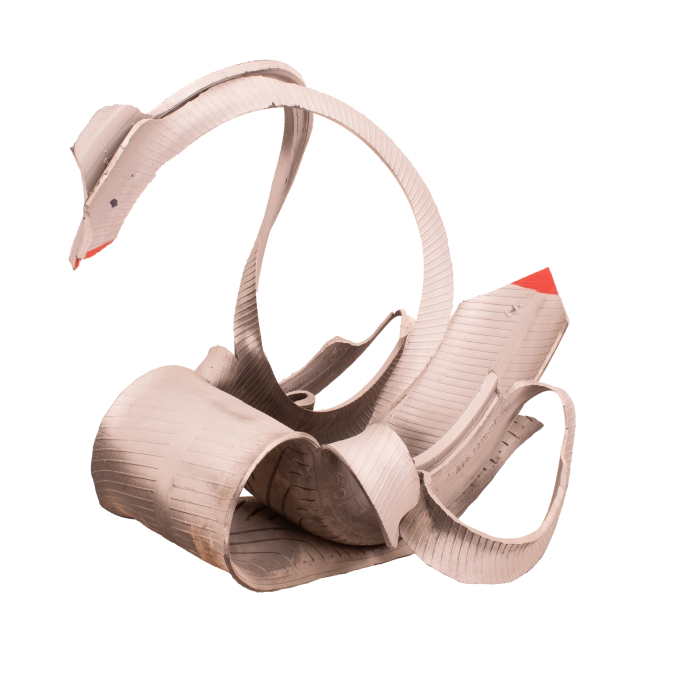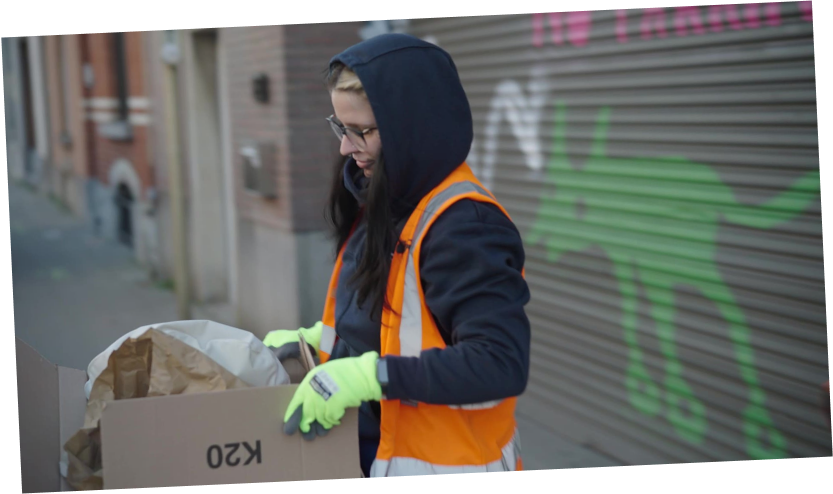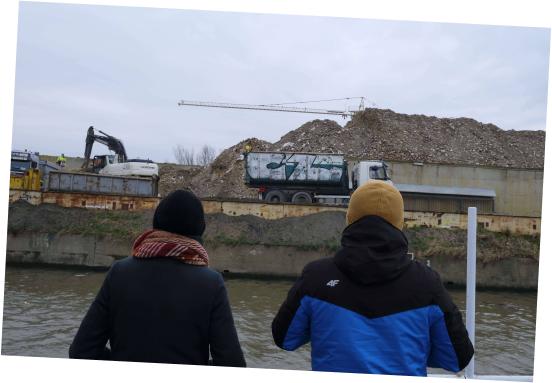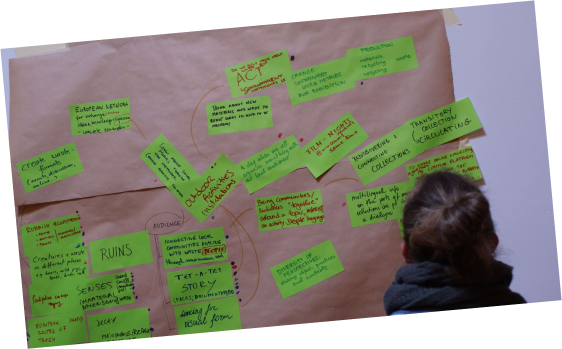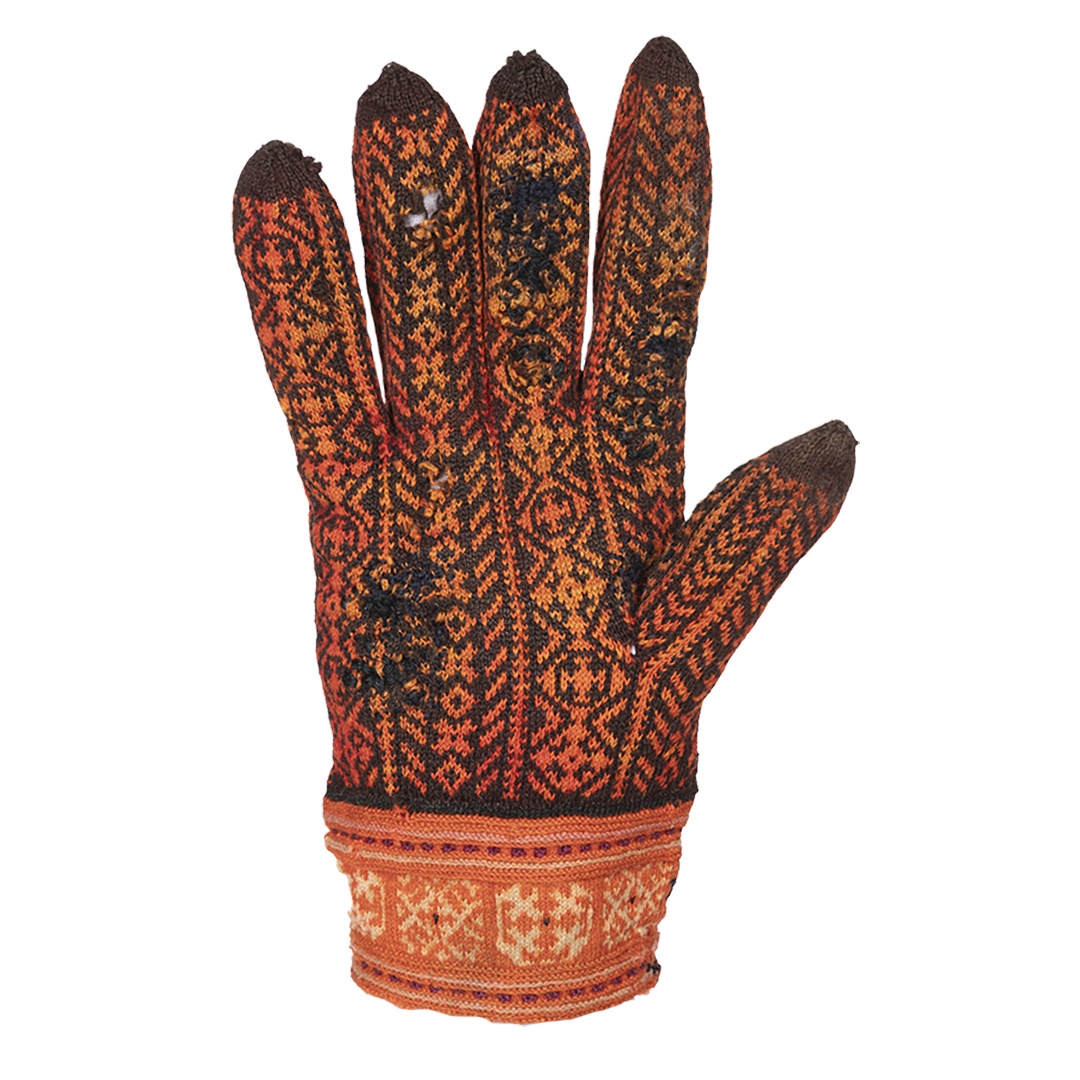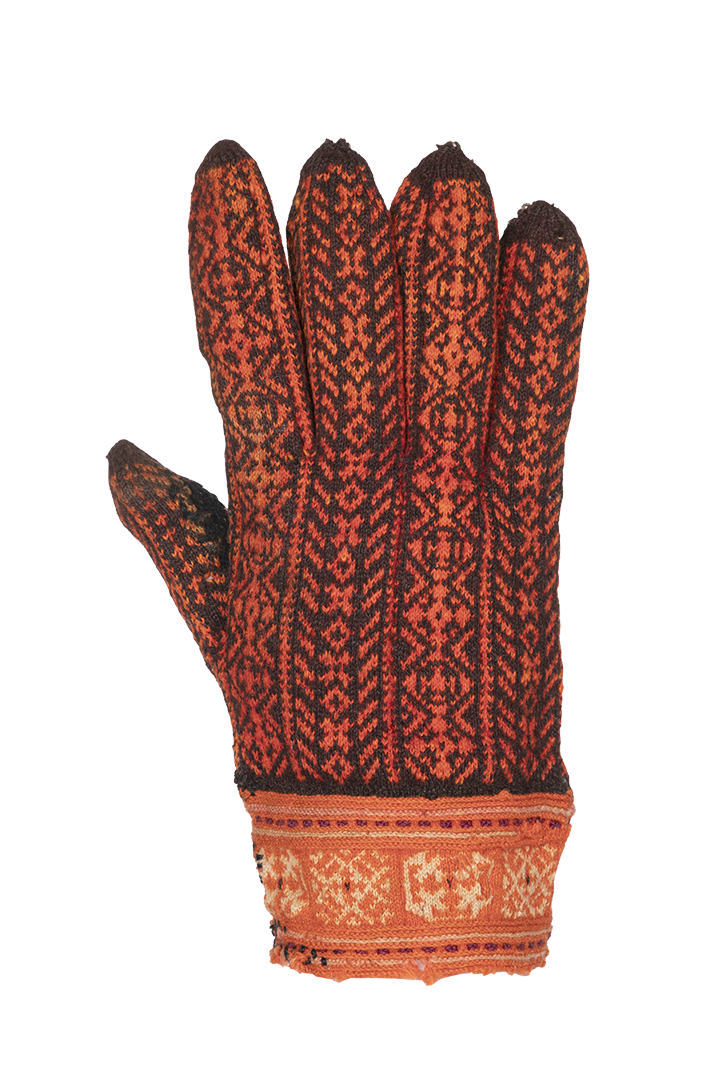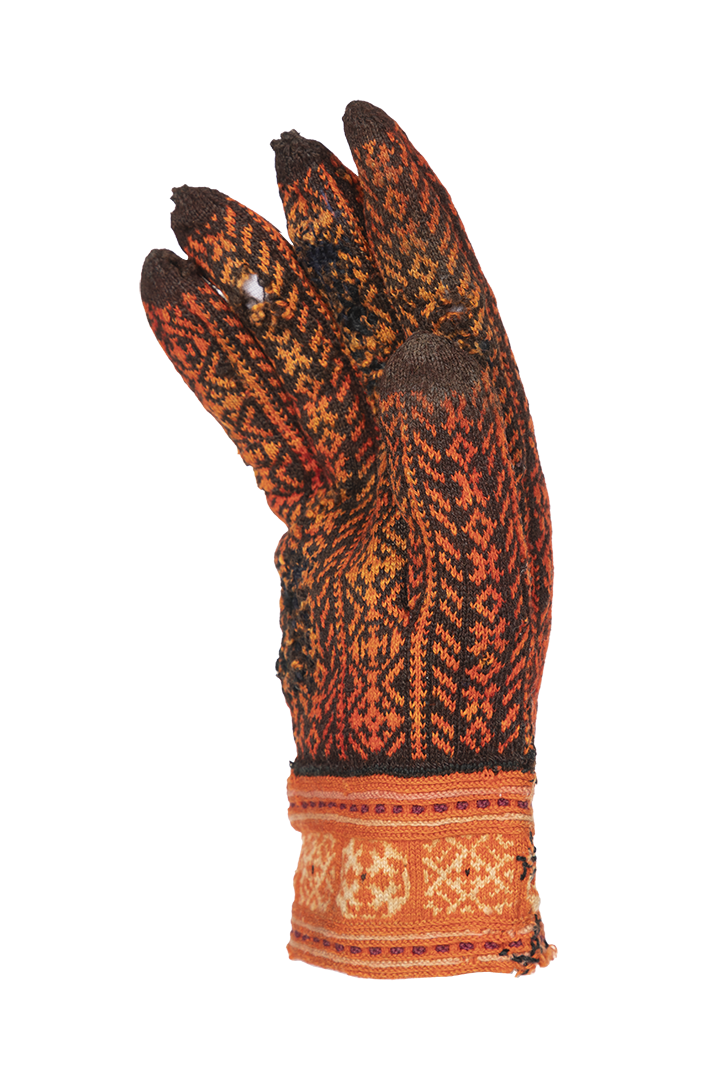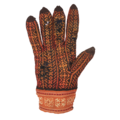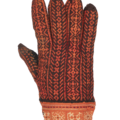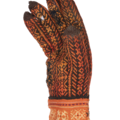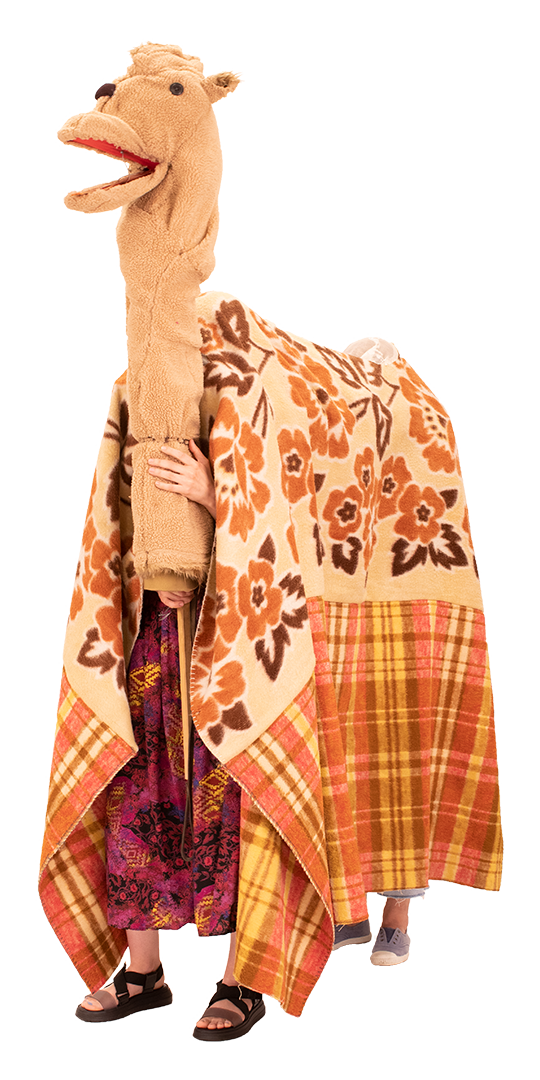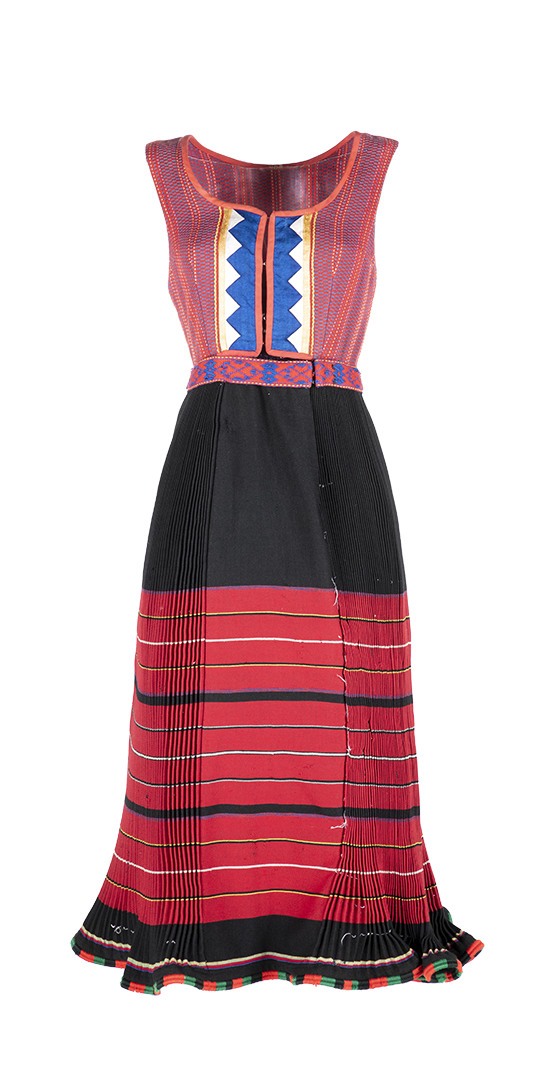Artist/Maker Folk art
Date Production/Creation
Home-made handicraft 1930s
Entry in the museum collection
The 2000s
Place of origin
Muhu island, Estonia, Europe
Current location
Estonian national museum, Tartu, Estonia
Material
Sheep’s wool
Dimension
Width: 12.0 cm; Length: 25.0 cm
Inventory Number
Keyword Cultural heritage Costume Textile
Copyright Estonian National Museum
Status Textile storage / collections
Image Credit Estonian National Museum
Knitted in Estonia, repatriated as waste from Germany.
What is this object about, who are the people behind it?
In modern Nordic countries gloves are important everyday ethnographic items in our homes, where beautiful traditional patterned gloves are used side by side with modern designer accessories. We all know that the main purpose of gloves for Estonians is to protect them from the cold. Woollen gloves were made in Estonia as early as the Bronze Age. Proof of use of knitting needles in Estonia comes from a glove fragment from the 14th century. The first types of gloves were needle mittens (made with a specialist needle). For centuries, glove wearing has had its own customs and traditions, playing an important role in wedding etiquette. In everyday life gloves also played a role in folk medicine; the warm gloves young men were given when they were sent to war may have been lifesavers in the winter cold; they may have been precious items from home for those fleeing from war across the sea in the 20th century.
‘I found this ethnographic glove that had been knitted on the beautiful Muhu island located on the east coast of the Baltic Sea in the Veski Street second-hand shop in Tartu. I asked where their goods came from and they said Germany. I bought the glove for 5 Estonian crowns and gave it to the museum. I wondered how this glove ended up in Germany. In fact, Germany had big refugee camps for Estonians – did an Estonian who ended up in the resettlement camp in Germany take their warm gloves with them? Or was it some soldier who was in a battle on Muhu and received them as hand warmers? In any case, I had all sorts of thoughts about how that glove ended up as waste and travelled back to Estonia as humanitarian aid. I put that beautiful ethnographic glove on display in 2009 as part of the National Museum’s exhibition to mark its 100th anniversary, as an example of how objects end up in the museum.’
Reet Piiri, ethnologist / Estonian National Museum / 2022
What places is this object related to, how European/transnational is it?
Estonia, Germany, resettlement camps after WWII, new retail network of the 1990s and the EU
Why and how did this object arrive in the museum’s collection?
The collection of traditional Estonian patterned gloves belonging to the Estonian National Museum is exceptionally plentiful – 4 116 in total –, which includes gloves with beautiful Estonian patterns and intriguing stories that have reached the collection from the Estonian diaspora. Traditional patterned gloves are a good exhibition material: techniques (knitting with needles), ethnographic peculiarities between Estonian parishes, colour teaching (use of wool), pattern as a semiotic system, provide a lot of clues on the meaning of folk costumes and on how these were worn that the museum can use in its educational programmes.
What is the relation of this object to waste?
Humanitarian aid system in Europe; there were huge quantities of textile garments brought to newly re-independent Baltic countries, to Estonia; in Germany they could have been left by waste containers or in collection boxes; they may have travelled from the home of a European person who was moving or renovating to the home of an Estonian person and not to landfill.

